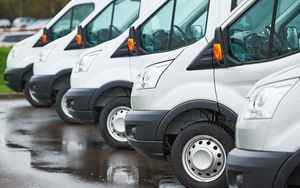(Finance) – In the month of April the market for vehicles commercial light registered a heavy drop in registrations, the worst since the beginning of the year. The new vehicles registered in the month, according to the estimates of the Study and Statistics Center UNRAEamounted to 14,190 unitswith a reduction of 16.5% compared to the 16,985 registrations in April 2021. A double-digit percentage drop for the first time this year, which contributes to worsening the balance of the first four months, standing at 58,180 registrations towards 63,079 January-April 2021, with an overall reduction of 7.8%.
The contraction of the market was certainly facilitated by the expectation of incentives which, three months after the announcement by the Government, are not yet usable due to the non-publication of the provision. Furthermore, there is still uncertainty about the types of companies that will be able to use them and there is a risk that the number of possible beneficiaries will be somewhat limited.
“The registrations in April reflect the orders collected in recent months, and therefore heavily discount the expectation of incentives, which until the adoption of the Prime Minister’s Decree – on 6 April – were hoped to be much broader. However, we want to hope that the publication of the decree, with a heavy and harmful delay, will soon follow the expansion of the categories of beneficiaries of the bonuses, through further measures “, says the President of UNRAE Michele Believe.
“Limit incentives to only vehicles electrical – adds Crisci – and exclude, even in the face of scrapping, traditional combustion vehicles, which are 98.5% of the total, means not only reducing the potential of the market, but above all delaying the renewal of the fleet in this important sector, one of the oldest in Europe; with the current pace it will take another 22 years to replace it entirely “.
With the amount of infrastructure charging currently present in Italy, moreover, it is difficult to promote the electrification of the commercial vehicle fleet: “We appreciate the launch of the incentives – says Michele Crisci – but it is equally essential that a solid infrastructural network is set up, also through relief tax for installation by private individuals, otherwise the zero-emission vehicle market will struggle to take off towards the levels required by the energy transition programs “.
The analysis of the market structure of the 1st quarter (with data still susceptible to slight adjustments in the next two months, due to registration delays), compared with the same period of 2021, highlights a sharp decline in private individuals which drop to 19, 4% of the share (-3.7 pp) and of the companies, which stop at 40.3% of the total (-5.6 pp). The decline of self-registrations brings them to a share of 4.6%, while short-term rental, with a loss of almost ¼ of volumes, stops at 4% of representativeness. The only growth channel is long-term rental, which rises by over 10 points to 31.7% of the total market.
On the front of the enginesthe gas records an exponential increase by doubling its market share and climbing to 6.5%; the LPG which reaches 2.7% of preferences. Diesel is confirmed to be in decline, losing more than 10 points, to 76.2% share, and methane at 1.4%. The dizzying growth of hybrid vehicles allows it to reach 11.2% of the total market; pure electricians rise to 1.5%. There Weighted average CO2 of vehicles with PTT up to 3.5t, calculated with the new WLTP cycle, in the 1st quarter marks a decrease of 6.5% to 180 g / km (compared to 192.4 g / km in the 1st quarter 2021).
(Photo: © Dmitry Kalinovsky / 123RF)
